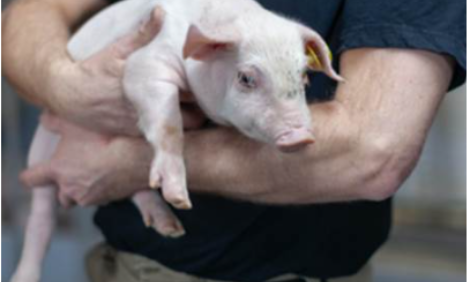



Examining Costs of Production
Software modelling tool, AusPig, was used to model the effects of live weight and carcass weight on Cost of Production (COP), using the Key Performance Indicators (KPIs) and costs recently released for 2008/09 from the Pork CRC’s Benchmarking Project as the baseline for a production unit, writes Graeme Crook, Pork CRC AusPig Project Manager, in the latest Australian Pork CRC Specials newsletter.
Results are shown on a live weight basis in Figure 1. Obviously, overhead costs decline as carcass weight increases and is reflected in COP, which was predicted to fall by about 30 A$ cents/kg if sale weight was increased from 80 (60 kg carcass) to 100 (75 kg carcass) kg live weight.
The effects on herd feed conversion (HFC) are not shown here, but over the same live weight range (80 to 100 kg) HFC would improve by five per cent. The relatively light weight of pigs demanded by the Australian market is clearly a competitive disadvantage in terms of the efficiency of resource utilisation and in COP, relative to other pork producing countries and in the longer term needs to be addressed. The latter can be improved through better reproduction, and in the number of pigs sold/sow per year, so there are many strategies to achieve the same major outcome.

In the short term, producers need to ensure they achieve adequate compensation (price) for the lighter carcasses demanded by the fresh meat market. The AusPig analysis should give producers an understanding of the differentials required for pigs of different sale weights.
Effects on COP of the higher feed costs experienced in 08/09 and those which exist now are shown in Figure 2. When feed costs averaged above $400/tonne (08/09) feed costs on a carcass weight basis were predicted to increase at live weights above approximately 85 kg. The latter was overridden by the decline in overhead or other costs, but the overall effect was considerably less than the changes predicted for the current situation in which feed costs are closer to and often below $300/tonne.

March 2010








